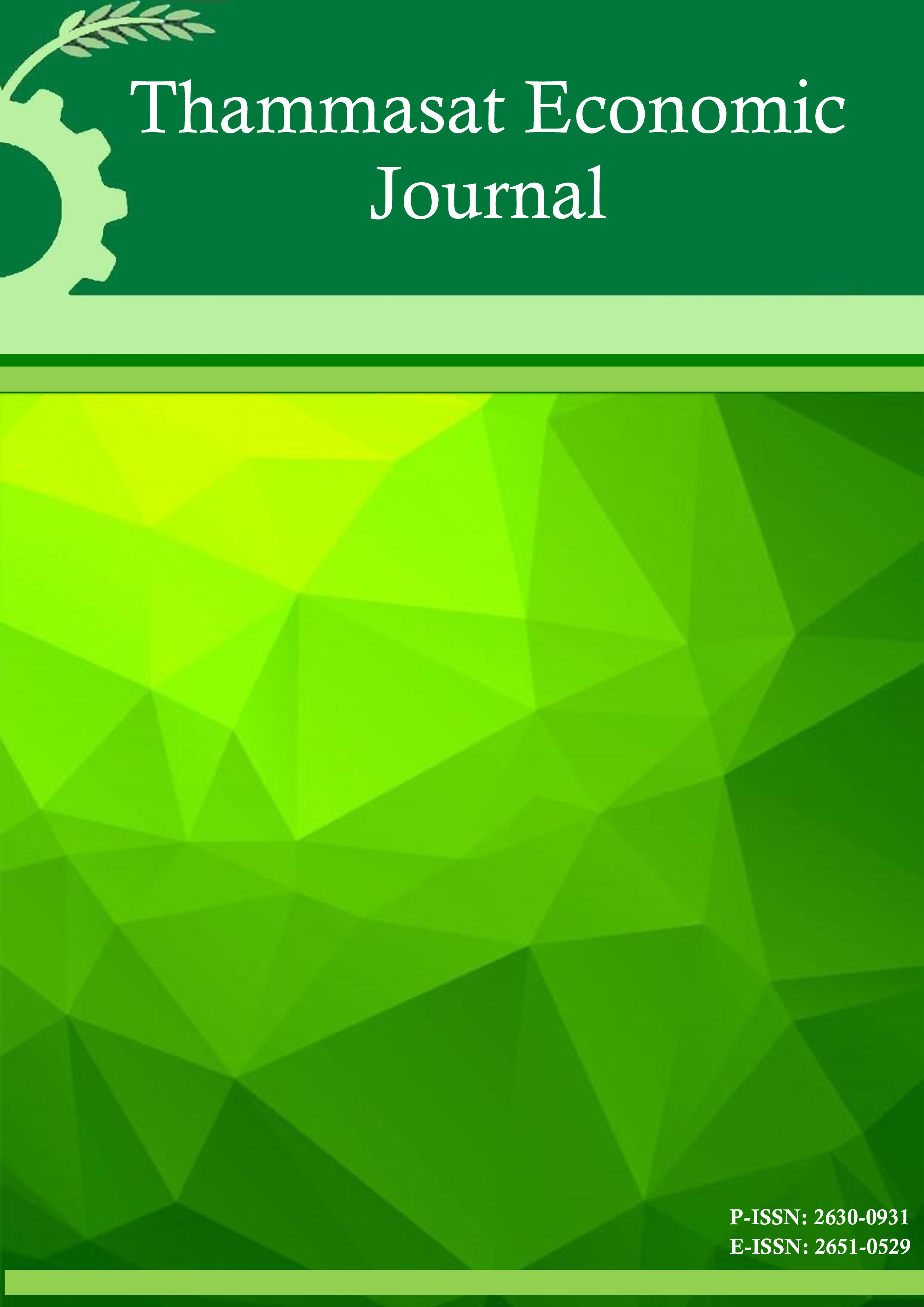Who Gains and Who Loses from the Exchange Rate System in Vietnam?
Keywords:
Multiple Exchange Rates, Efficiency Costs, VietnamAbstract
As in many other developing countries, the imposition of foreign exchange controls to stabilize the nominal exchange rate and a long-lasting dollarisation phenomenon in Vietnam have caused an unofficial exchange market to emerge. A de facto system of multiple exchange rates operates in practice, where official exchange rates coexist with a free market exchange rate.
Literature on multiple exchange rate (MER)regimes suggests that MERs can serve for the balance of payments purpose as well as a method of raising implicit taxes on exporters who are required to surrender foreign exchange earnings to the central bank through the exchange system. This paper attempts to identify the benefits and costs of the government and economic sectors under a MER system in Vietnam.
Using a static partial equilibrium framework modified from Rosenberg and De Zeeuw (2001) and Hori and Wong (2008), this study estimates the equilibrium exchange rate that would prevail in a unified exchange market. This rate is more depreciated than the current official rate by about 5-8 percent in the period 2007-09. Using the estimated equilibrium rates, the net efficiency losses in the export market are calculated at 6.3 percent, 5.2 percent and 8.5 percent in 2007, 2008 and 2009 respectively while importer market has net efficiency gains. Public importers often enjoy higher gains than their private counterparts do. In total, public firms gain 05-0.6 percent of GDP in 2009 from international trade under this exchange rate system while the private sector bears a cost of 0.2 percent of GDP. Unification of these segmented exchange markets would lead to an expansion of trade openness by 27 percent of GDP while narrow trade deficit by 0.7 percent of GDP in 2009. Exchange rate reform towards a convertible currency would eliminate exchange profits for the government. Therefore, such reform should be gradually implemented and coordinated by fiscal adjustment.
References
2. Agenor, Pierre-Richard (1990) A monetary model of the parallel market for foreign exchange, International Monetary Fund Staff Papers, 37(3), pp. 560-592.
3. Agénor, Pierre-Richard and E. Murat Ucer (1999) Exchange market reform, inflation, and fiscal deficits, Journal of Economic Policy Reform, 391), pp.81-96.
4. Bahmani-Oskooee, Mohsen and Orhan Kara (2005), Income and price elasticities of trade. some new estimates, International Trade Journal, 19(2), pp.165-178.
5. Hori, Masahiro and Yu Ching Wong (2008), Efficiency costs of Myanmar’s multiple exchange rate regime. IMF working paper WP/08/199.
6. IMF (2006). Annual Report on Exchange Arrangements and Exchange Restrictions 2005 International Monetary Fund, 1288-1295.
7. IMF (2006b), Vietnam: Selected issues. IMF Country Report No. 06/442. International Monetary Fund, Washington, D.C.
8. IMF (2010), “Vietnam: Selected Issues”. IMF Country Report No. 10/442. International Monetary Fund, Washington, D.C.
9. Kharas, Homi and Brian Pinto (1989), Exchange rate rules, black market premia and fiscal deficits: the Bolivian hyperinflation, The Review of Economic Studies, 56(3), pp.435-447.
10. Kiguel, Miguel and Stephen A. O'Connell (1995), Parallel exchange rates in developing countries, The World Bank Research Observer, 10(1), pp. 21-52.
11. Lizondo, J.S. (1991) A note on dual foreign exchange markets with official rationing: predetermined versus floating official exchange rate, Journal of Development Economics, 44, pp. 429-39.
12. Mackenzie, G.A and Peter Stella (1996). Quasi-fiscal operations of public financial institutions. IMF Occasional Paper, No. 142
13. Miguel, Kiguel, Lizondo, - J. S & O'Connell, S. A. (1997) Parallel Exchange Rates in Developing Countries (London: MacMillan Press).
14. Nguyen, Khac Minh (2000) Analysing impacts of the financial crisis on Vietnam ‘s exports to Japan, Ph.D Dissertation, Faculty of Economics, Thammasat University, Bangkok.
15. Nguyen, Thi Hong (2002), Dollarisation of financial assets and liabilities of the household sector, the enterprises sector and the banking sector in Vietnam, in the JICA-State Bank of Vietnam Joint Research Project Workshop on "Dollarisation and its effect on monetary and foreign exchange rate policies and the development of financial system, Vietnam, Lao PDR and Cambodia", 5 July 2002. Hanoi.
16. Nguyen, Tran Phuc and Nguyen Duc-Tho (2009) Exchange rate policy in Vietnam, 1985–2008, ASEAN Economic Bulletin, 26(2), pp. 137-163.
17. Nguyen, Van-Tien (2006) Tai chinh Quoc te [International Finance] (Hanoi: Statistics Publisher).
18. Nguyen-Tran-Phuc and Nguyen-Duc-Tho (2009), The foreign exchange market in Vietnam, 1986-2008: a market microstructure approach, Working Paper, Griffith University Brisbane.
19. Pinto, Brian (1987), Fiscal deficits, inflation and parallel exchange markets in ghana: monetarism in the tropics? World Bank Country Policy Department Discussion Article 1985-43. Washington, D.C. Processed.
20. Pinto, Brian (1989) Black market premia, exchange rate unification, and inflation in sub-saharan Africa, The World Bank Economic Review, 3(3), pp. 321-338. Princeton, New Jersey.
21. Rosenberg, Christoph and Maarten De Zeeuw (2001) Welfare effects of Uzbekistan’s foreign exchange regime, IMF Staff Papers, 48(1), pp.160-178. tvidence, and policy implications, in Princeton essays in international finance, 188
22. Vo Tri Thanh, Dinh Hien Minh, Do Thu Huong, Nguyen Thi Hong (2002) Kha nang chiu dung tham hut cua can can thanh toan vang lai cua Viet Nam [The Sustainability of Vietnam Current Account]. (Hanoi: The Labour and Social Publisher).
23. Vo, Tri Thanh and Dinh Hien Minh, Do Xuan Truong, Hoang Van Thanh, Pham Chi Quang (2000). Exchange rate in Vietnam: arrangement, information content and policy options. Individual Research Project, East Asian Development Network, July, Hanoi.
24. Vo, Tri Thanh and Pham Chi Quang (2008). Managing capital flows: the case of Vietnam ADB Institute Discussion Paper No.105.










